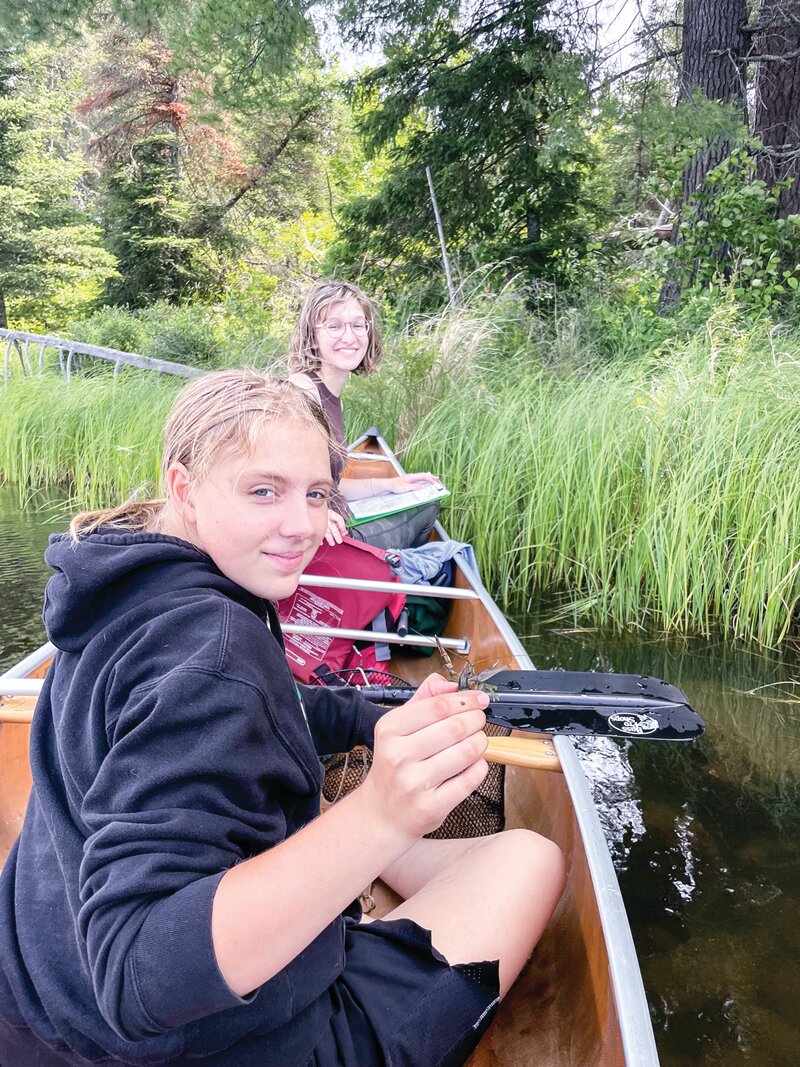Support the Timberjay by making a donation.
ECR water project
ELY- Editor’s note: Ely Community Resource has hosted a water project in Ely since 2016. Every year, they submit an article written by one of their high school employees for publication in the …
This item is available in full to subscribers.
Attention subscribers
To continue reading, you will need to either log in to your subscriber account, below, or purchase a new subscription.
Please log in to continue |
ECR water project
ELY- Editor’s note: Ely Community Resource has hosted a water project in Ely since 2016. Every year, they submit an article written by one of their high school employees for publication in the Timberjay.
The Water Project operated by the Ely Community Resource (ECR) offers Ely students the opportunity to connect to the area’s surrounding water bodies and their organisms. It fosters the next generation of water conservationists through a wide array of programs.
Two mornings a week, Jill Swanson from ECR and I have the pleasure of taking a kevlar canoe out on the Burntside River. We tromp down the large, steep rocks on the edge of the water. Jill and I gently plop the canoe into the river—both of us hoping to lure the clawed critters out of their rocky hideaways.
This year, we were significantly more successful in trapping crayfish compared to 2022. It may have been due to the higher river level and flow as opposed to last year or just the natural ebb and flow of the crayfish population. It is such a unique and marvelous opportunity to observe how the river changes from week to week: such as the water lily blooms, varying levels of vegetation in the water, or the majestic blue herons that swoop over us.
The Water Project began in 2016, trapping and monitoring rusty crayfish along the Burntside River, and I’ve been part of the project since the summer of 2021. I also get the chance to help out with early detection of other aquatic invasive species. Alongside Liz Anderson of Lake County Water and Soil Conservation District, Jill Swanson, and my classmate, Sylvia Shock, we canoe on various Lake County lakes to inspect the arrival of harmful plant and animal species. We also participated in a two-day crayfish expansion project along the South Kawishiwi River, where we paddled and set traps to see if rusty crayfish had moved in.
At the beginning of each month, we traveled to five different locations in the White Iron chain of lakes with Dave Setterholm of the White Iron Chain of Lakes Association (WICOLA).
We monitored water temperature, water clarity, dissolved oxygen, PH, conductivity, and sulfates. We also tested the water column for spiny waterfleas. The hands-on experience helps to give students like me and Sylvia the opportunity to help withWICOLA’s results from its sample collection go into a database maintained by the Minnesota Pollution Control Agency’s (MPCA) and used for reports related to our lakes’ water quality.
In 2022, ECR was awarded the Community Conservationist Award by the MPCA and the Minnesota Association of Soil and Water Conservation Districts. The nomination noted the group enriching opportunities for participating students in Ely and their real contribution to data collection. After receiving the award, ECR was contacted by the Minnesota Aquatic Invasive Species Research Center to volunteer with their Environmental DNA (eDNA) Phase II study on Shagawa Lake.
This past July, Jill Swanson and five Ely Memorial students, including Sylvia and myself, took samples at six different locations on Shagawa Lake. eDNA, genetic material collected from the environment, is a powerful tool that can be used to measure the presence and abundance of organisms. Diffusion of eDNA should allow for detection of aquatic invasive species with small samples of water collected anywhere within the lake.
ECR’s Water Project took on one more opportunity this past summer with help from the MPCA. Twice a month, Jill and five middle schoolers were assigned six different locations along the Shagawa and South Kawishiwi Rivers to monitor the following: stream appearance, recreational suitability, water clarity, stream temperature and stream stage. The students learned interesting details about characteristics important to the health of the watershed as well as the importance of data collection.
The Water Project keeps me delightfully busy during the summer and gives me a sense of ful-fillment that I can do my part to help conserve the (Boundary Waters).






